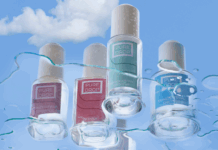The European Commission is due to submit a proposal to member states by 2025 for the universal restriction of all per- and polyfluoroalkylated substances (PFAS). France, for its part, is preparing a bill to ban the marketing of cosmetic products containing PFAS by January 1, 2026, ahead of Europe.
Cosmed, a trade association representing 1,030 cosmetics companies, has launched a PFAS working group to support the beauty industry in mastering this subject, in particular with a study of the impact of the use of this family of 4,000 chemical compounds, around 40 of which would concern cosmetic products.
While the association supports and encourages the abolition of PFAS in cosmetics, it advocates an alignment of the regulatory framework and the definition of criteria at European level, guaranteeing the free circulation of products through the establishment of a single market, and within a dual timeframe.
1- A ban on the intentional and direct addition of PFAS substances to the formula - the definition of a threshold
The cosmetics industry was quick to react to the PFAS issue, adopting alternatives to replace these substances in beauty products at an early stage. Substitution solutions are already available to formulators, and the industry remains committed to eliminating PFAS from cosmetic formulas.
However, according to Cosmed, this ban can only apply, in the first instance, to the intentional addition of PFAS to formulations. Thus, it is crucial to define a rational, implementable and verifiable threshold for PFAS content, in order to target these intentional additions. This will enable a clear interpretation of this intentionality and facilitate checks by the authorities.
2- PFAS in trace form: essential data collection
The widespread use of PFAS in many industrial sectors means that they may be present in trace amounts in products through packaging or water.
Water is often the main ingredient, accounting for between 60 % and 95 % of many creams, lotions, shower gels and shampoos.
With regard to packaging, Cosmed points out that the collection of potential presence can only be based on an exchange of information with suppliers. According to the organization, any collection of information that is not governed by a regulatory obligation is very delicate, if not practically impossible for SMEs. This uncertainty in data collection can only be resolved with a European rule.
Assessing the various possible sources of contamination and the associated trace levels requires data collection at all stages of the manufacturing chain. Cosmed stresses the importance of defining a realistic, phased implementation schedule to enable effective communication of information and gradual implementation of the restriction at all levels of the manufacturing chain, right through to the finished cosmetic product.
Photo: uluer servet yüce / Pixabay








